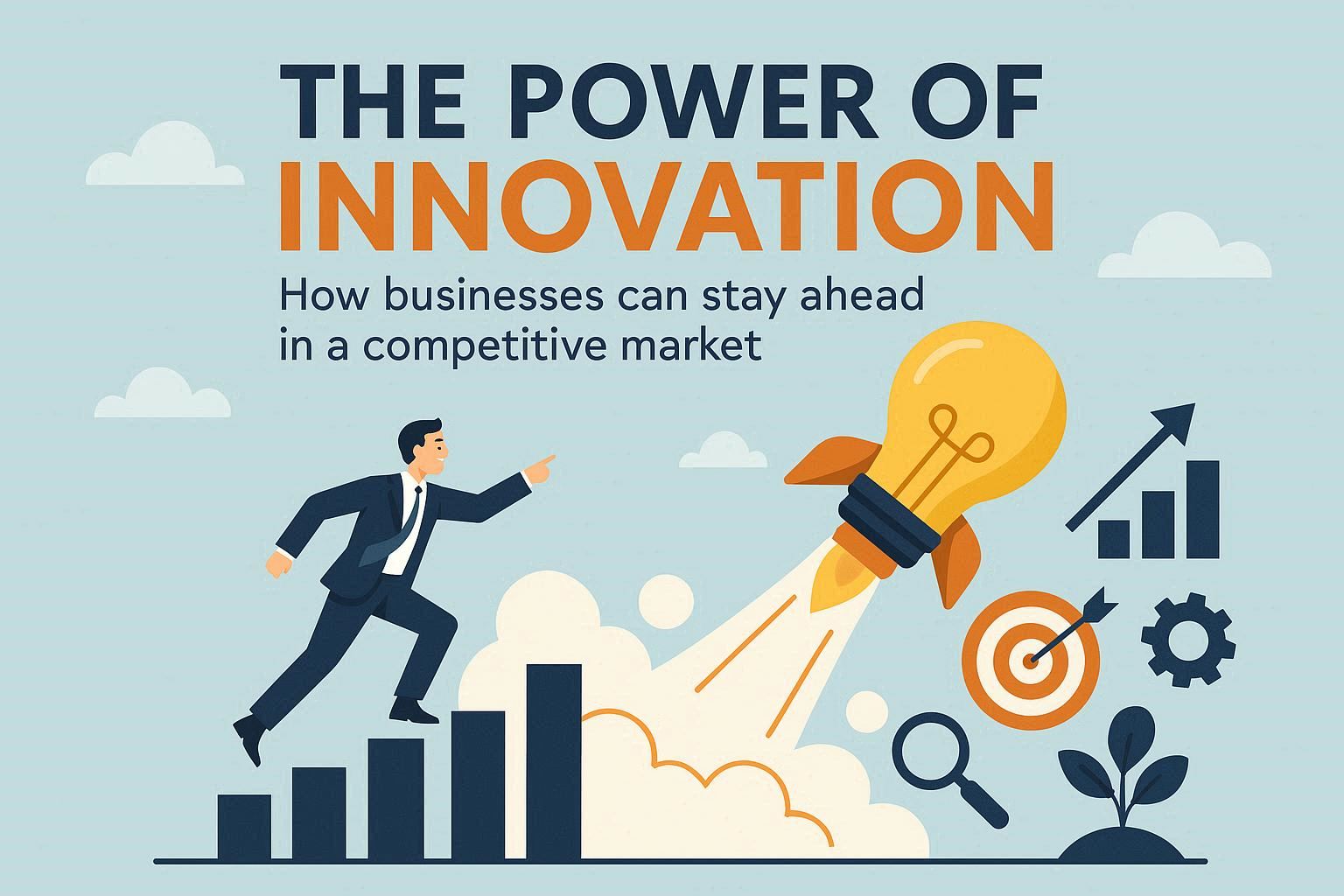Innovation has always been a driving force behind business success. From the invention of the steam engine to the rise of artificial intelligence, companies that innovate lead markets while those that fail to adapt often disappear. In today’s fast-paced, technology-driven world, the importance of innovation has never been greater.
This article explores why innovation is essential for modern businesses, the different types of innovation, the challenges companies face when trying to innovate, and practical strategies to stay ahead in a competitive global marketplace.
1. Why Innovation Matters in Business
Innovation is more than launching new products—it is about improving processes, rethinking customer experiences, and finding better ways to solve problems. Businesses that prioritize innovation enjoy several advantages that translate into long-term growth and resilience.
Innovative companies create unique value propositions that set them apart from competitors and build customer loyalty by continuously improving products and services. Through innovation, organizations streamline operations, reduce costs, and improve productivity, which in turn strengthens their ability to withstand economic shocks and adapt during uncertain times.
2. Types of Innovation in Business
2.1 Product Innovation – Product innovation involves creating new products or significantly improving existing ones. This kind of innovation often redefines markets by combining different technologies or by making previously expensive solutions accessible to a wider audience. Smartphones are a classic example: they merged multiple technologies into one device and created entirely new industries.
2.2 Process Innovation – Process innovation focuses on improving the ways a company operates. By optimizing workflows, adopting automation, or redesigning production methods, firms can increase efficiency and lower costs. Examples include robotic automation in manufacturing and AI-driven logistics that reduce delivery times and waste.
2.3 Business Model Innovation – Business model innovation means rethinking how a company captures value. Subscription models, platform marketplaces, and pay-per-use services changed customer expectations and revenue generation strategies—examples include music and video streaming services that replaced one-time purchases with recurring access.
2.4 Marketing Innovation – Marketing innovation uses creative approaches to reach and engage customers. This can be influencer-driven campaigns, highly personalized advertising powered by data, or interactive experiences that increase brand loyalty. Marketing innovation helps companies connect with audiences in meaningful ways and drive conversions.
3. Challenges to Business Innovation
While innovation is essential, businesses often face obstacles when implementing new ideas. High upfront costs for research and development can deter investment, especially for smaller firms. Not every idea succeeds; the risk of failure is real, and organizations must be prepared to learn from setbacks.
Resistance to change from employees and managers can slow progress, and short-term financial pressures may prioritize immediate returns over long-term innovative projects. Overcoming these challenges requires strong leadership, a clear strategy, and an organizational culture that encourages experimentation and accepts reasonable risk.
4. Strategies for Fostering Innovation
4.1 Encourage a Culture of Creativity – To spark innovation, employees must feel safe proposing new ideas. Companies can foster creativity through structured brainstorming sessions, internal incubators, or “innovation hours” where teams experiment with new concepts without immediate performance pressures.
4.2 Invest in Research and Development – Allocating resources to R&D allows companies to stay ahead of technological trends and customer needs. This doesn’t always mean large budgets—small businesses can use affordable digital tools, partnerships, or pilot projects to test new ideas and learn quickly.
4.3 Collaborate with Partners – Collaboration with startups, universities, industry consortia, and even competitors can accelerate innovation. Partnerships open access to new ideas, technical expertise, and shared risk, enabling faster development cycles and broader impact.
4.4 Leverage Technology – Emerging technologies such as artificial intelligence, blockchain, and the Internet of Things create new possibilities for products and services. Businesses that strategically adopt these tools can unlock efficiency gains and develop offerings that were previously impossible.
4.5 Listen to Customers – Customer feedback is one of the most valuable innovation inputs. Companies that actively collect and act on user insights can refine products and services to better match real needs, reducing time-to-market and increasing adoption rates.
5. Real-World Examples of Business Innovation
Tesla disrupted the automotive industry by focusing on electric vehicles and integrating sustainable energy solutions into a cohesive product and brand. Airbnb reinvented hospitality by enabling peer-to-peer rentals and leveraging underused assets. Amazon continuously innovates across logistics, cloud computing, and customer experience to stay ahead. Zoom quickly became ubiquitous for remote communication by offering a user-friendly, reliable video platform.
These examples demonstrate how innovation can reshape industries and create entirely new markets when companies combine vision, technology, and execution.
6. The Role of Leadership in Innovation
Leadership plays a pivotal role in enabling innovation. Effective leaders encourage creative thinking, allocate resources to experimentation, and accept the possibility of failure as part of the learning process. Transparent goals, recognition of innovative efforts, and clear communication motivate teams to pursue bold ideas and follow them through.
7. Future Trends in Business Innovation
Several trends are shaping the next era of innovation. The expansion of artificial intelligence will drive smarter decision-making and hyper-personalized customer experiences. Sustainability-focused innovation will become essential as consumers and regulators demand greener solutions. Remote and hybrid work models will push further innovation in collaboration tools. Decentralized finance (DeFi) and blockchain solutions will change how money and contracts are managed. Global collaboration enabled by digital platforms will expand access to talent and markets, fostering cross-border innovation.
Conclusion
In a rapidly evolving world, innovation is the lifeblood of business success. It enables companies to differentiate themselves, meet customer expectations, and adapt to changing markets. While challenges such as cost and resistance to change exist, businesses that prioritize creativity, leverage modern technologies, and embrace forward-thinking leadership will thrive.
The future belongs to companies that innovate boldly and consistently. Those that invest in fresh ideas, sustainable solutions, and customer-driven strategies will not only survive but also define the next era of business.

